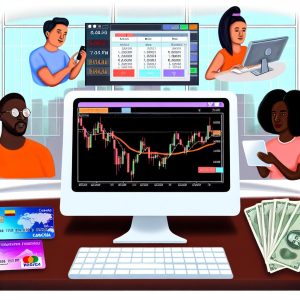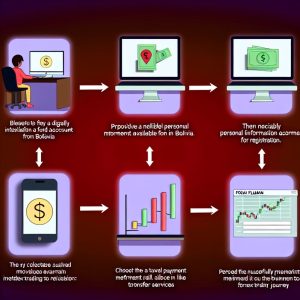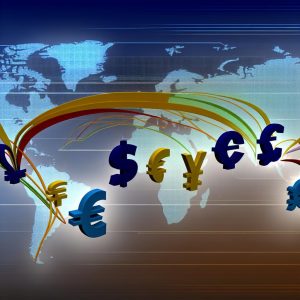Trading USD/BOB: Opportunities and Challenges
Understanding USD/BOB Trading




The USD/BOB pair is the designated symbol for the exchange rate between the United States dollar (USD) and the Bolivian boliviano (BOB). This currency pair holds significance for businesses and individuals participating in international trade and investment activities between the United States and Bolivia. Engaging in such financial transactions requires an understanding of the economic and financial principles that affect this particular currency pair.
Key Characteristics of USD/BOB
The Bolivian boliviano, denoted as BOB, serves as the official currency of Bolivia. Compared to major global currencies such as the USD, EUR, or GBP, the BOB is considered a smaller market currency. This factor affects the market liquidity, leading to larger bid-ask spreads. Such spreads can influence transaction costs, particularly in the realm of forex trading. For traders and investors, comprehending these characteristics is fundamental to executing effective currency trades.
Exchange Rate Stability
Bolivia employs a managed float exchange rate system, which permits the central bank of Bolivia to intervene in the currency markets when deemed necessary to ensure financial stability. Such interventions contribute to a relatively stable exchange rate for the USD/BOB currency pair. This reduced volatility is in stark contrast to many other currencies found in emerging markets, providing a level of predictability that is attractive to traders and businesses engaging in commerce between the two nations. Consequently, the stable exchange rate can aid in forecasting financial outcomes and planning strategic investments.
Economic Influences
Multiple factors converge to impact the USD/BOB exchange rate. Understanding these influences is crucial for market participants aiming to make informed trading decisions.
Economic Performance: The overall economic health of Bolivia plays a substantial role in determining its currency value. Key sectors such as mining and natural gas are significant contributors to the country’s economic condition and, by extension, affect the BOB’s strength or weakness against the USD.
Monetary Policy: The central banks of both Bolivia and the United States periodically adjust monetary policies, exerting influence over exchange rates. Modifications in interest rates or other monetary policy tools by these banks can have significant ramifications on the USD/BOB currency pair, necessitating close monitoring by traders and investors.
Trade Balance: The comparative value of Bolivia’s exports against its imports also contributes to the exchange rate dynamics. A trade surplus, where exports surpass imports, typically strengthens the BOB against the USD. Conversely, a trade deficit may result in a weakening of the BOB, impacting exchange rates accordingly.
Opportunities in Trading USD/BOB
For forex traders seeking diversification strategies, understanding the USD/BOB currency pair affords numerous opportunities.
Strategic Trading
Stable Currency Conditions: The perceived stability of the BOB offers traders a measure of predictability. By diligently analyzing trends and price patterns within limited fluctuations, traders can potentially capitalize on smaller market movements. This predictability can be a key consideration for traders focused on minimizing risk in their trading portfolios.
Diversification: Incorporating the USD/BOB pair into a forex portfolio can be a valuable strategy for diversification. By spreading currency risks across different pairs, traders can mitigate potential losses emanating from volatility in other currency segments, ensuring a more balanced and robust portfolio performance.
Investment in Bolivia
For investors interested in exploring opportunities within the Bolivian market, trading the USD/BOB pair can serve as an advantageous financial strategy. The exchange rate serves as a critical gateway for capital flows within the Bolivian economy. Therefore, comprehending exchange rate dynamics can support sound investment decisions, particularly in dominant sectors like agriculture, energy, and mining. This understanding plays a pivotal role in optimizing investment returns by facilitating informed strategic choices about asset allocation and timing.
Challenges in USD/BOB Trading
Despite the opportunities presented, trading the USD/BOB pair is not devoid of challenges. Awareness of these issues is paramount for effective risk management.
Liquidity Concerns
Unfortunately, as a less liquid currency, the BOB poses certain challenges compared to more widely traded currencies. This lack of liquidity can manifest in higher transaction costs and wider spreads, which may adversely affect profitability, especially for short-term traders engaged in frequent transactions. These liquidity constraints necessitate careful consideration and strategic planning to maximize trading outcomes.
Market Volatility
Although the BOB is renowned for its relative stability, it remains susceptible to unforeseen volatility instigated by geopolitical or economic disruptions in Bolivia. Such disruptions can entail political changes, natural disasters, or fluctuations in commodity prices, all potentially affecting exchange rates. Traders must remain ever-vigilant and informed about current events and their potential impacts on the currency’s value.
Conclusion
Trading the USD/BOB currency pair entails a mix of opportunities and challenges. While its relative stability can be appealing to certain traders, liquidity concerns and potential unforeseen volatility pose risks requiring circumspect consideration. By developing a nuanced understanding of the dynamics and influences affecting the Bolivian boliviano, market participants can equip themselves with the knowledge and perspective needed to navigate the complexities of the forex market effectively. Deploying this knowledge in strategic ways can empower traders and investors to make informed decisions grounded in a firm grasp of currency exchange dynamics.
This article was last updated on: September 2, 2025




